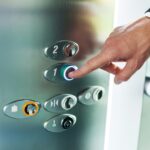Building managers are always looking for ways to keep their operations running smoothly, and that includes making sure elevators perform well every day. When you’re overseeing a building that relies on a traction elevator system, consistent performance isn’t just important — it directly affects how tenants, visitors, and workers experience the space. Whether it’s a commercial office tower or a residential high-rise, elevator reliability affects ease of access, user satisfaction, and long-term system health.
With the right habits and a little early planning, you can stay ahead of many common problems. Instead of reacting to issues on the fly, optimizing how your traction elevators run can help you reduce downtime, improve safety, and cut back on wear and tear. The good news is, you don’t need a major overhaul to make big improvements. A few practical strategies can keep your system running better, longer.
Regular Maintenance Checks
Routine maintenance tends to get overlooked until something goes wrong, but waiting for breakdowns makes elevator management unpredictable and costly. Staying on top of regular maintenance appointments is still one of the smartest ways to protect and improve your traction elevator system. These systems have moving parts that deal with heavy loads daily, so keeping things clean, balanced, and well-lubricated goes a long way.
Routine inspections can catch issues before they grow into bigger problems. They also give elevator technicians a chance to spot signs of wear on cables or check if the brakes and door systems are working properly. Consult your service provider for a schedule that fits how often your elevators are used. Busy commercial buildings may want checks more often than smaller residential properties.
Here are some tasks that should be part of your maintenance plan:
– Inspect and lubricate hoist ropes
– Check and adjust motor alignment
– Monitor control systems for signs of malfunction
– Clean and test door sensors
– Inspect the condition of guide rails
– Tighten electrical connections
A clean machine room and regular system testing can also help identify hard-to-see problems. Something as simple as a slightly misaligned part could strain the system over time. Keeping up with maintenance doesn’t just reduce risk — it helps elevators run more smoothly every day.
Upgrade to Advanced Control Systems
If your traction elevator system still runs on an older control setup, you may be missing out on smoother performance and better energy use. Newer elevator control systems are designed to improve efficiency and ride comfort by adjusting how power is used based on real-time demand. Upgrading to a smart controller doesn’t mean you need to replace the entire elevator. It’s often a matter of modernizing the control panel and integrated software.
One of the major benefits of advanced control systems is better load balancing and trip coordination. This means your elevators can respond faster during peak hours and operate more efficiently when things quiet down. These systems can also help reduce wear by avoiding unnecessary stops and movements.
An example of this would be switching to a destination dispatch system — a control upgrade where users select their floor before entering the elevator. This allows the system to group passengers going to similar floors, which lowers wait times and increases overall system performance. These tools also make it easier to schedule updates, run self-diagnostics, and reduce the chance of unexpected failures.
Control upgrades can be especially helpful in multi-elevator setups, where communication between each unit helps distribute traffic. With the right tech in place, your elevators are not just machines going up and down. They become part of a smart, responsive system that works better for everyone who uses it.
Implement Energy-Efficient Upgrades
Energy efficiency matters more than ever, not just for cost reasons but also for reducing the load on equipment over time. Building managers focused on long-term performance should consider making small upgrades that ease energy demand and improve how traction elevator systems run. These tweaks don’t have to be large-scale to make a difference.
Swapping out older lighting in elevator cabs for modern LED fixtures is a simple place to start. LEDs put out less heat, last longer, and use significantly less energy. That means less strain on the electrical system and fewer service calls to replace burned-out bulbs. Switching to regenerative drives is another practical update. These systems convert energy generated during elevator braking into reusable energy, often feeding it back into the building’s power grid. While not every setup qualifies for this tech, it’s worth checking with your technician to see if yours does.
Another upgrade to think about is cab ventilation fans. Older fans tend to run nonstop, even when the cab isn’t in use. By installing smart fans that shut down when idle or run at lower speeds, buildings can reduce power usage and cabin noise at the same time.
Here are a few straightforward upgrades that support better energy use:
– LED lighting inside the elevator car
– Regenerative drives that recycle braking energy
– Smart ventilation fans that adjust with cab activity
– Motion sensors that control lights and fans based on usage
– Energy-efficient AC drives for smoother acceleration and deceleration
These modifications help improve the daily function of your elevator system while reducing wear on moving parts. That means fewer mechanical issues and a smoother ride for tenants or visitors.
Train Staff and Foster Communication
It’s easy to overlook the people side of elevator operations, but well-informed building staff can make a big difference in system performance. When the people responsible for the property have a solid understanding of how traction elevators work — what noises are normal, how to reset a trip, or when to call in help — they tend to spot smaller issues before they turn into major problems.
Start by giving your maintenance or front desk team basic elevator training. This doesn’t mean becoming technicians, but knowing what warning signs to look for and understanding how the system responds during certain conditions. Knowing how to report issues clearly, with exact symptoms and error codes if possible, saves time later during repair visits.
It also helps to create an open line of communication between the building’s maintenance crew and the elevator service provider. When both sides keep a log of past issues, shutdowns, or gaps in performance, it becomes easier to track any growing concerns. This log can be as simple as a shared document listing callouts, elevator behavior, notes from techs, or times of unusual traffic.
Good communication leads to faster problem-solving, better data for tracking recurring faults, and less time wondering what might be wrong.
Monitor Usage and Performance Data
Every traction elevator has its own daily rhythm. Understanding how your system is used — and how it performs under different conditions — gives you the edge when it comes to planning ahead. Instead of relying on guesswork or technician visits alone, many building managers now use monitoring tools that track elevator performance in real time.
Installing a system that collects ongoing data gives access to details like average ride times, number of trips per day, and error logs. These tools can also flag when the elevator slows unexpectedly or starts to overheat. Being able to review this info helps identify patterns that often go unnoticed by building staff.
Even if your elevator isn’t set up for smart diagnostics, start by tracking a few key bits of information manually:
– Number of shutoffs or service calls in a month
– Repeat issues and repairs needed
– Wait times during peak traffic
– Tenant complaints or comments on cab quality
– Power usage compared over different months
Over time, this info shows whether an issue is isolated or part of a larger trend. It also helps prepare for when it’s time to upgrade or make adjustments, offering a practical case to share with service teams or property owners.
Keep Your Elevators Running at Their Best
Taking care of a traction elevator system takes more than just scheduling repairs when something breaks. From adopting energy-saving fixes to logging how your elevator runs day to day, every small step you take keeps your system healthier and more reliable.
Simple updates like installing LED lights or upgrading the control system don’t just improve function — they reduce stress on mechanical components and create a smoother experience for anyone using the elevator. On the human side, training your onsite staff and improving how the building communicates with tech teams builds a support system that can respond quickly to changes or problems.
By staying active in how your elevator is maintained, used, and reviewed, building managers can avoid most headaches before they happen. The performance of a traction elevator doesn’t just rest on the machine — it runs on the choices you make now that help it work better later.
To keep your traction elevator system operating safely and efficiently, staying ahead with routine service and timely upgrades makes a big difference. Kaiser Elevators is here to help you improve performance, reduce downtime, and protect your equipment long term. Learn how our traction elevator system support can keep your building moving smoothly every day.

